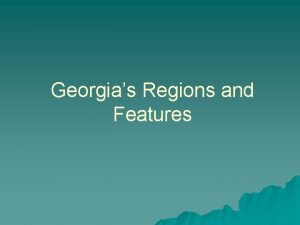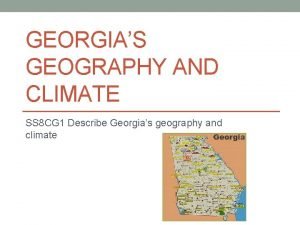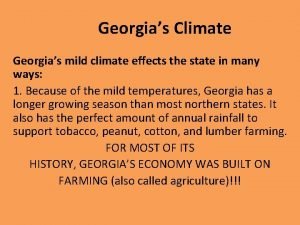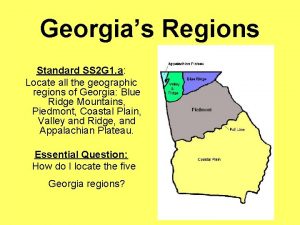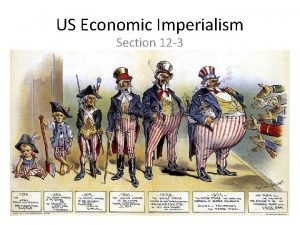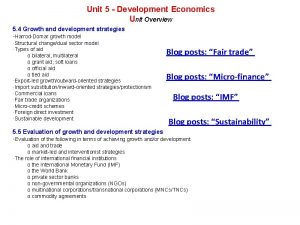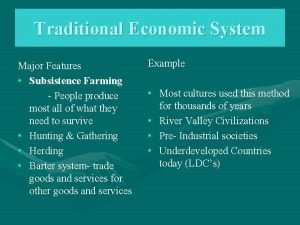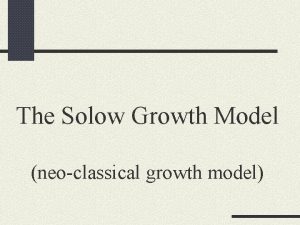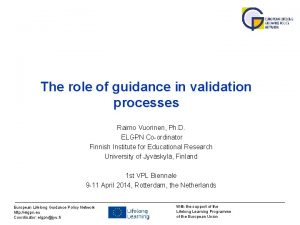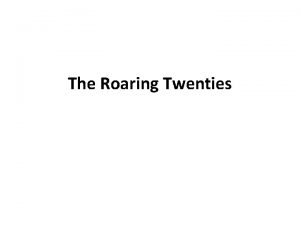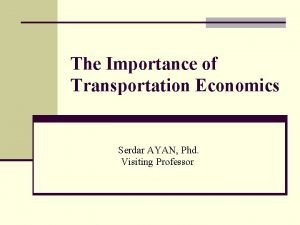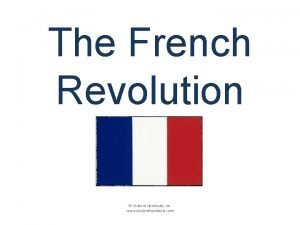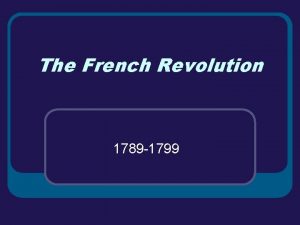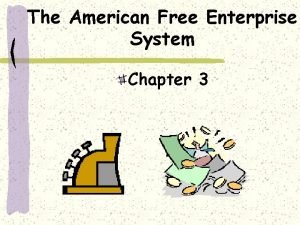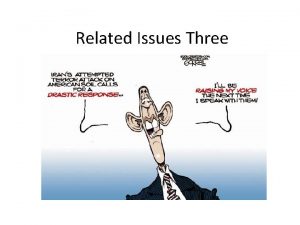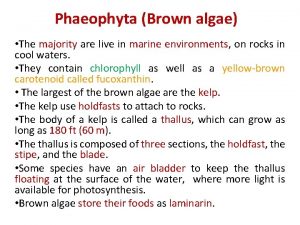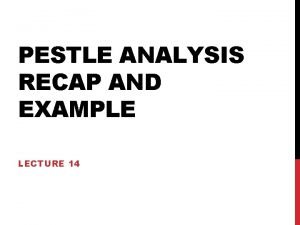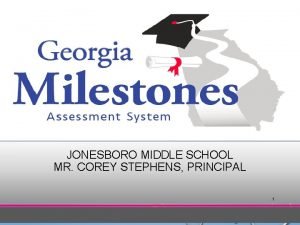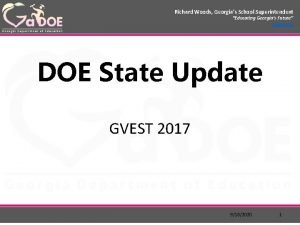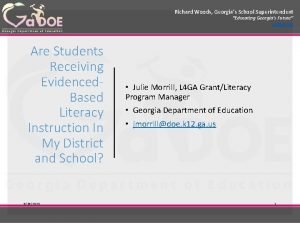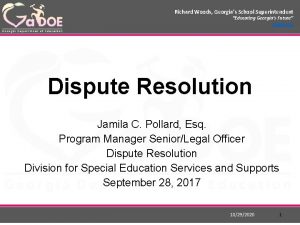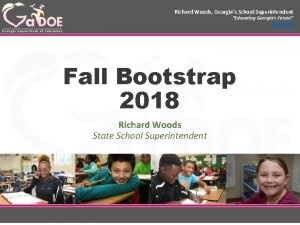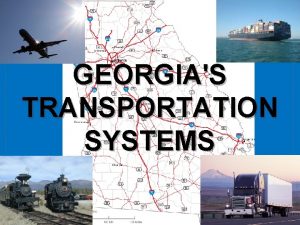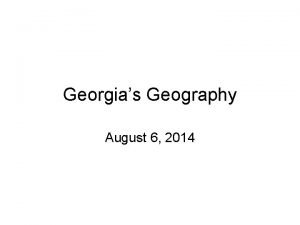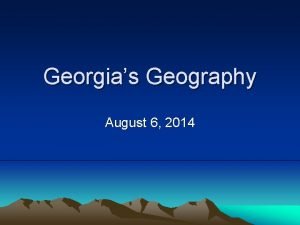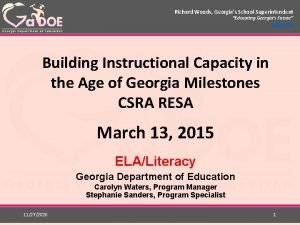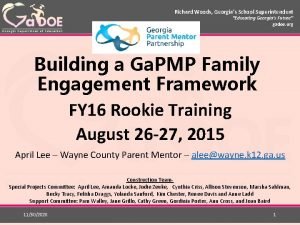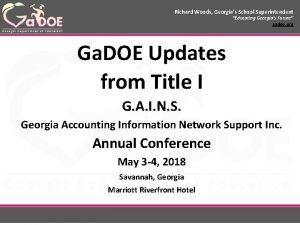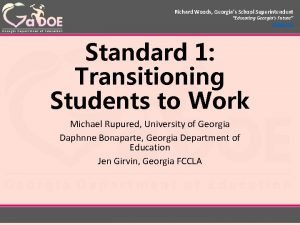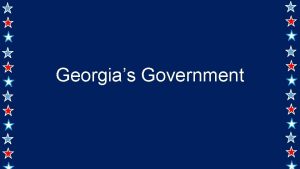SS 8 H 5 cd Georgias History Economic






































































- Slides: 70

SS 8 H 5 cd Georgia’s History: Economic Growth & Indian Removal © 2014 Brain Wrinkles

Standards SS 8 H 5 The student will explain significant factors that affected the development of Georgia as part of the growth of the United States between 1789 and 1840. c. Explain how technological developments, including the cotton gin and railroads, had an impact on Georgia’s growth. d. Analyze the events that led to the removal of Creeks and Cherokees; include the roles of Alexander Mc. Gillivray, William Mc. Intosh, Sequoyah, John Ross, Dahlonega Gold Rush, Worcester v. Georgia, Andrew Jackson, John Marshall, and the Trail of Tears. © 2014 Brain Wrinkles

Teacher Info – Who’s & What’s • Print off the Who’s & What’s handout for each student. (Print front and back to save paper. ) • BEFORE the lesson, have students fill in the squares with what they think each term means. • AFTER the presentation, the students will write down new (factual) information about each term. • Check the answers as a class. © 2014 Brain Wrinkles

Who’s & What’s What I think this means: Cotton Gin Definition: What I think this means: Railroads Directions: BEFORE the lesson, write what you think each term means. AFTER the presentation, you will write down new information about each term. Definition: Who I think this is: Cherokee What I think this means: Definition: Creeks Definition: Who I think this is: William Mc. Intosh What I think this means: Definition: Alexander Mc. Gillivray Definition: © 2014 Brain Wrinkles

What I think this means: Sequoyah Definition: What I think this means: John Ross Who’s & What’s Definition: Who I think this is: Worchester V. Georgia What I think this means: Definition: Dahlonega Gold Rush Definition: Who I think this is: John Marshall What I think this means: Definition: Andrew Jackson Definition: © 2014 Brain Wrinkles

Who’s & What’s Trail of Tears What I think this means: Definition: © 2014 Brain Wrinkles

Teacher Directions – CLOZE Notes • The next pages are handouts for the students to use for notetaking during the presentation. (Print front to back to save paper and ink. ) • Check the answers as a class after the presentation. • *Please note – the slides in this presentation are content-heavy. Feel free to open the editable file if you’d like to delete anything. I’ve found that it’s better to have too much than not enough! © 2014 Brain Wrinkles

New Technologies CLOZE Notes Cotton Gin • During the 1800 s, Georgia’s economy relied heavily on important cash crops: ____________________ , and cotton. • Cotton became the ____________________ due to the invention of the ____________________ by Eli Whitney in 1793. • The cotton gin involved a system of rollers, teeth, and brushes that separated seeds from cotton ____________________. • It increased the rate at which cotton could be ____________________. • The cotton gin also increased the ____________________ because plantation owners needed slaves to harvest all of the cotton. • Soon, Georgia became one of the ____________________ in the world. Cotton Production • In the 1800 s, businessmen established a number of ____________________ in Georgia. • Machines in the mills could ____________________ inexpensively, and the demand for cotton was high. • The development of the cotton industry led to an important need: a way for cotton to be transported more ______________________. Railroads • Georgia’s economic growth relied heavily on the ____________________. • The General Assembly chartered ____________________ : The Georgia Railroad Co. (an Athens-Augusta line), the Central of Georgia Railroad Co. (a Savannah. Macon line), and the Monroe Railroad Co. (a Macon-Forsyth line). • By 1860, there were more than ____________________ of railroads in Georgia. • The Western and Atlantic rail line from Chattanooga ended in a town called ____________________. • Two other railroads eventually converged there and gave rise to the new, bustling town that served as a ______________________________. • The name Terminus was changed to Marthasville in 1843 , and then ____________________. • Within 15 years, Atlanta was the ____________________ in the South. © 2014 Brain Wrinkles

Creeks CLOZE Notes Losing Side • During the Revolutionary War, many Native Americans in Georgia fought as ____________________. • The British ____________________ taken by white settlers once Britain won the war. • Once the war was over, Georgians desired to ____________________ of more and more of their land. Mc. Gillivray • The Creeks were prominent in southern and western Georgia and did not want to ____________________. • Chief ____________________ , son of a Scottish trader and half-French, half-Creek mother, led the Creeks in ____________________. • During the Revolutionary War, he led ____________________ in Georgia and Tennessee. • In 1790, ____________________ met with Chief Mc. Gillivray in hopes of peacefully settling disputes between Creeks and white Georgians. • They signed the ____________________ , in which the Creeks gave up some of their land in exchange for a promise that settlers would ____________________ beyond a certain point. • It didn’t take long for the government to ____________________ … Mc. Intosh • In 1823, Governor George Troup pressured the federal government to ____________________ from their remaining land. • They negotiated with Troup’s first cousin, ____________________ , who was the son of a Scottish officer and a Creek woman. • Mc. Intosh signed the Treaty of Indian Springs in 1825, which ____________________ to the state of Georgia. Relocation • A war party ____________________ to death and took his scalp, and also murdered several other leaders who signed the treaty. • By 1827, the Creeks had ____________________ across the Mississippi River. © 2014 Brain Wrinkles

Cherokee CLOZE Notes 1 Cherokee • Georgia’s other main Native American tribe was the Cherokee (they lived mainly in ____________________ and western North Carolina). • The Cherokee _________________________ the most. • They lived in houses, farmed, ____________________ , and some owned slaves. • The created an advanced society with a constitution and an ____________________. Sequoyah • One of the Cherokees’ most famous members was ____________ , also known as George Gist (his father was a Virginian and his mother a Cherokee). • He ____________________ that enabled the tribe to read, write, and publish its own newspaper, called the Cherokee Phoenix. • The newspaper contributed to the _______________________________ because it helped tribe members communicate and share important news. John Ross • In 1791, the U. S. government signed a treaty guaranteeing that the Cherokee nation could be independent and have its ____________________. • The government was modeled after the ____________________ and was led by ____________________. • He was the son of a Scottish father and ____________________ , part-Scottish mother. Gold Rush • In 1829, settlers ___________________________ in north Georgia. • The Dahlonega Gold Rush was on and ____________________ flooded into north Georgia to get rich. • The settlers pressured the Cherokee to ____________________ , and the General Assembly began passing laws ____________________ to both the land gold. © 2014 Brain Wrinkles

Cherokee CLOZE Notes 2 Worcester v. GA • The General Assembly passed a law that said whites could ____________________ and they could not live in Cherokee territory without ____________________ of allegiance to the governor. • In 1832, a Christian missionary named ______________ refused to swear the oath because he felt it was his duty to ____________________. • He was ____________________ but appealed his case all the way to the Supreme Court. John Marshall • In 1832, under the leadership of ____________________ , the Supreme Court ruled in ____________________ in Worcester v. Georgia. • Marshall said that Georgia must set Worcester free because Georgia laws were ____________________. Andrew Jackson • ____________________ was also frustrated by the decision and chose to ____________________. • When Georgia refused to release Worcester, President Jackson said, “John Marshall has made his decision, now ____________________. ” • He ____________________ and wanted to get the Cherokee ____________________. Trail of Tears • In 1835, the U. S. government forced the Cherokee to sign a treaty ____________________ in Georgia. • In 1838, the U. S. Army rounded up ____________________ and forced them on a ____________________ to Indian territory in Oklahoma. • More than ___________ men, women, and children died from disease, starvation, and exposure to the cold weather. • This sad journey is remembered as the _______________. © 2014 Brain Wrinkles

New Technologies CLOZE Notes - KEY Cotton Gin • During the 1800 s, Georgia’s economy relied heavily on important cash crops: rice, indigo, tobacco, and cotton. • Cotton became the main cash crop due to the invention of the cotton gin by Eli Whitney in 1793. • The cotton gin involved a system of rollers, teeth, and brushes that separated seeds from cotton much faster than by hand. • It increased the rate at which cotton could be produced and sold. • The cotton gin also increased the demand for slavery because plantation owners needed slaves to harvest all of the cotton. • Soon, Georgia became one of the top cotton producers in the world. Cotton Production • In the 1800 s, businessmen established a number of textile mills in Georgia. • Machines in the mills could make cotton into cloth inexpensively, and the demand for cotton was high. • The development of the cotton industry led to an important need: a way for cotton to be transported more easily and efficiently to Savannah. Railroads • Georgia’s economic growth relied heavily on the invention of railroads. • The General Assembly chartered 3 rail lines in 1833: The Georgia Railroad Co. (an Athens-Augusta line), the Central of Georgia Railroad Co. (a Savannah-Macon line), and the Monroe Railroad Co. (a Macon-Forsyth line). • By 1860, there were more than 1, 200 miles of railroads in Georgia. • The Western and Atlantic rail line from Chattanooga ended in a town called Terminus. • Two other railroads eventually converged there and gave rise to the new, bustling town that served as a major connector between the main lines. • The name Terminus was changed to Marthasville in 1843 , and then to Atlanta in 1845. • Within 15 years, Atlanta was the center of railroad trade in the South. © 2014 Brain Wrinkles

Creeks CLOZE Notes - KEY Losing Side • During the Revolutionary War, many Native Americans in Georgia fought as allies of the British. • The British promised to return land taken by white settlers once Britain won the war. • Once the war was over, Georgians desired to push Native Americans off of more and more of their land. Mc. Gillivray • The Creeks were prominent in southern and western Georgia and did not want to give up their land. • Chief Alexander Mc. Gillivray, son of a Scottish trader and half-French, half. Creek mother, led the Creeks in resisting white expansion. • During the Revolutionary War, he led raids on settlements in Georgia and Tennessee. • In 1790, President George Washington met with Chief Mc. Gillivray in hopes of peacefully settling disputes between Creeks and white Georgians. • They signed the Treaty of New York, in which the Creeks gave up some of their land in exchange for a promise that settlers would not move west beyond a certain point. • It didn’t take long for the government to break its promise… Mc. Intosh • In 1823, Governor George Troup pressured the federal government to drive the Creeks from their remaining land. • They negotiated with Troup’s first cousin, William Mc. Intosh, who was the son of a Scottish officer and a Creek woman. • Mc. Intosh signed the Treaty of Indian Springs in 1825, which gave up all Creek lands to the state of Georgia. Relocation • A war party stabbed Mc. Intosh to death and took his scalp, and also murdered several other leaders who signed the treaty. • By 1827, the Creeks had relocated to the wilderness across the Mississippi River. © 2014 Brain Wrinkles

Cherokee CLOZE Notes 1 KEY Cherokee • Georgia’s other main Native American tribe was the Cherokee (they lived mainly in north Georgia and western North Carolina). • The Cherokee adapted to white culture the most. • They lived in houses, farmed, owned property, and some owned slaves. • The created an advanced society with a constitution and an independent government. Sequoyah • One of the Cherokees’ most famous members was Sequoyah, also known as George Gist (his father was a Virginian and his mother a Cherokee). • He created a Cherokee alphabet that enabled the tribe to read, write, and publish its own newspaper, called the Cherokee Phoenix. • The newspaper contributed to the unification of the Cherokee Nation because it helped tribe members communicate and share important news. John Ross • In 1791, the U. S. government signed a treaty guaranteeing that the Cherokee nation could be independent and have its own government. • The government was modeled after the U. S. federal government and was led by Chief John Ross. • He was the son of a Scottish father and part-Cherokee, part-Scottish mother. Gold Rush • In 1829, settlers discovered gold in Cherokee territory in north Georgia. • The Dahlonega Gold Rush was on and thousands of white settlers flooded into north Georgia to get rich. • The settlers pressured the Cherokee to give up their lands, and the General Assembly began passing laws denying the Cherokee rights to both the land gold. © 2014 Brain Wrinkles

Cherokee CLOZE Notes 2 KEY Worcester v. GA • The General Assembly passed a law that said whites could not help the Cherokee and they could not live in Cherokee territory without swearing an oath of allegiance to the governor. • In 1832, a Christian missionary named Samuel Worcester refused to swear the oath because he felt it was his duty to help the oppressed. • He was sentenced to prison but appealed his case all the way to the Supreme Court. John Marshall • In 1832, under the leadership of Chief Justice John Marshall, the Supreme Court ruled in favor of the Cherokee in Worcester v. Georgia. • Marshall said that Georgia must set Worcester free because Georgia laws were not valid in Cherokee territory. Andrew Jackson • President Andrew Jackson was also frustrated by the decision and chose to ignore it. • When Georgia refused to release Worcester, President Jackson said, “John Marshall has made his decision, now let him enforce it. ” • He believed firmly in Indian removal and wanted to get the Cherokee out of Georgia. Trail of Tears • In 1835, the U. S. government forced the Cherokee to sign a treaty giving up all of their lands in Georgia. • In 1838, the U. S. Army rounded up 14, 000 Cherokee and forced them on a 800 -mile march to Indian territory in Oklahoma. • More than 4, 000 men, women, and children died from disease, starvation, and exposure to the cold weather. • This sad journey is remembered as the Trail of Tears. © 2014 Brain Wrinkles

SS 8 H 5 c New Technologies © 2014 Brain Wrinkles

Cotton Gin • During the 1800 s, Georgia’s economy relied heavily on important cash crops: rice, indigo, tobacco, and cotton. • Cotton became the main cash crop due to the invention of the cotton gin by Eli Whitney in 1793. • The cotton gin involved a system of rollers, teeth, and brushes that separated seeds from cotton much faster than by hand. © 2014 Brain Wrinkles

Eli Whitney & Cotton Gin © 2014 Brain Wrinkles

Cotton Gin • It increased the rate at which cotton could be produced and sold. • The cotton gin also increased the demand for slavery because plantation owners needed slaves to harvest all of the cotton. • Soon, Georgia became one of the top cotton producers in the world. © 2014 Brain Wrinkles

© 2014 Brain Wrinkles

© 2014 Brain Wrinkles

Cotton Production • In the 1800 s, businessmen established a number of textile mills in Georgia. • Machines in the mills could make cotton into cloth inexpensively, and the demand for cotton was high. • The development of the cotton industry led to an important need: a way for cotton to be transported more easily and efficiently to Savannah. © 2014 Brain Wrinkles

Savannah ranked first as a cotton seaport on the Atlantic and second in the world. © 2014 Brain Wrinkles

Railroads • Georgia’s economic growth relied heavily on the invention of railroads. • The General Assembly chartered 3 rail lines in 1833: The Georgia Railroad Co. (an Athens-Augusta line), the Central of Georgia Railroad Co. (a Savannah. Macon line), and the Monroe Railroad Co. (a Macon -Forsyth line). • By 1860, there were more than 1, 200 miles of railroads in Georgia. © 2014 Brain Wrinkles

Thousands of cotton bales ready to be shipped on the railroad. © 2014 Brain Wrinkles

Railroads • The Western and Atlantic rail line from Chattanooga ended in a town called Terminus. • Two other railroads eventually converged there and gave rise to the new, bustling town that served as a major connector between the main lines. • The name Terminus was changed to Marthasville in 1843 , and then to Atlanta in 1845. • Within 15 years, Atlanta was the center of railroad trade in the South. © 2014 Brain Wrinkles

© 2014 Brain Wrinkles

SS 8 H 5 d Removal of the Creek & Cherokee © 2014 Brain Wrinkles

Losing Side • During the Revolutionary War, many Native Americans in Georgia fought as allies of the British. • The British promised to return land taken by white settlers once Britain won the war. • Once the war was over, Georgians desired to push Native Americans off of more and more of their land. © 2014 Brain Wrinkles

Mc. Gillivray • The Creeks were prominent in southern and western Georgia and did not want to give up their land. • Chief Alexander Mc. Gillivray, son of a Scottish trader and half-French, half-Creek mother, led the Creeks in resisting white expansion. • During the Revolutionary War, he led raids on settlements in Georgia and Tennessee. © 2014 Brain Wrinkles

Chief Alexander Mc. Gillivray © 2014 Brain Wrinkles

Mc. Gillivray • In 1790, President George Washington met with Chief Mc. Gillivray in hopes of peacefully settling disputes between Creeks and white Georgians. • They signed the Treaty of New York, in which the Creeks gave up some of their land in exchange for a promise that settlers would not move west beyond a certain point. • It didn’t take long for the government to break its promise… © 2014 Brain Wrinkles

Mc. Intosh • In 1823, Governor George Troup pressured the federal government to drive the Creeks from their remaining land. • They negotiated with Troup’s first cousin, William Mc. Intosh, who was the son of a Scottish officer and a Creek woman. • Mc. Intosh signed the Treaty of Indian Springs in 1825, which gave up all Creek lands to the state of Georgia. © 2014 Brain Wrinkles

Chief William Mc. Intosh © 2014 Brain Wrinkles

Relocation • The treaty greatly angered the Creek people. • A war party stabbed Mc. Intosh to death and took his scalp, and also murdered several other leaders who signed the treaty. • By 1827, the Creeks had relocated to the wilderness across the Mississippi River. © 2014 Brain Wrinkles

Indian Cessions in Georgia, 1733 -1835 © 2014 Brain Wrinkles

Cherokee • Georgia’s other main Native American tribe was the Cherokee (they lived mainly in north Georgia and western North Carolina). • The Cherokee adapted to white culture the most. • They lived in houses, farmed, owned property, and some owned slaves. • The created an advanced society with a constitution and an independent government. © 2014 Brain Wrinkles

Cherokee Nation © 2014 Brain Wrinkles

Sequoyah • One of the Cherokees’ most famous members was Sequoyah, also known as George Gist (his father was a Virginian and his mother a Cherokee). • He created a Cherokee alphabet that enabled the tribe to read, write, and publish its own newspaper, called the Cherokee Phoenix. • The newspaper contributed to the unification of the Cherokee Nation because it helped tribe members communicate and share important news. © 2014 Brain Wrinkles

Sequoyah & the Cherokee Phoenix © 2014 Brain Wrinkles

John Ross • In 1791, the U. S. government signed a treaty guaranteeing that the Cherokee nation could be independent and have its own government. • The government was modeled after the U. S. federal government and was led by Chief John Ross. • He was the son of a Scottish father and part. Cherokee, part-Scottish mother. © 2014 Brain Wrinkles

John Ross © 2014 Brain Wrinkles

Gold Rush • In 1829, settlers discovered gold in Cherokee territory in north Georgia. • The Dahlonega Gold Rush was on and thousands of white settlers flooded into north Georgia to get rich. • The settlers pressured the Cherokee to give up their lands, and the General Assembly began passing laws denying the Cherokee rights to both the land gold. © 2014 Brain Wrinkles

Dahlonega Gold Rush © 2014 Brain Wrinkles

Worcester v. GA • The General Assembly passed a law that said whites could not help the Cherokee and they could not live in Cherokee territory without swearing an oath of allegiance to the governor. • In 1832, a Christian missionary named Samuel Worcester refused to swear the oath because he felt it was his duty to help the oppressed. • He was sentenced to prison but appealed his case all the way to the Supreme Court. © 2014 Brain Wrinkles

Samuel Worcester © 2014 Brain Wrinkles

John Marshall • In 1832, under the leadership of Chief Justice John Marshall, the Supreme Court ruled in favor of the Cherokee in Worcester v. Georgia. • Marshall said that Georgia must set Worcester free because Georgia laws were not valid in Cherokee territory. • Georgia’s government was enraged by the ruling. © 2014 Brain Wrinkles

Chief Justice John Marshall © 2014 Brain Wrinkles

Andrew Jackson • President Andrew Jackson was also frustrated by the decision and chose to ignore it. • When Georgia refused to release Worcester, President Jackson said, “John Marshall has made his decision, now let him enforce it. ” • He believed firmly in Indian removal and wanted to get the Cherokee out of Georgia. © 2014 Brain Wrinkles

President Andrew Jackson © 2014 Brain Wrinkles

Trail of Tears • In 1835, the U. S. government forced the Cherokee to sign a treaty giving up all of their lands in Georgia. • In 1838, the U. S. Army rounded up 14, 000 Cherokee and forced them on a 800 -mile march to Indian territory in Oklahoma. • More than 4, 000 men, women, and children died from disease, starvation, and exposure to the cold weather. • This sad journey is remembered as the Trail of Tears. © 2014 Brain Wrinkles

© 2014 Brain Wrinkles

© 2014 Brain Wrinkles

Teacher Info – Comprehension Questions • Students should answer the questions after discussing the presentation. Afterwards, check and share answers as a class. • *You can also use this as a quiz! © 2014 Brain Wrinkles

Comprehension Questions 1. Georgia’s cotton was shipped from which coastal city? 2. Which invention greatly increased cotton production? 3. Which city became the center of railroad traffic in the South? 4. Which side did Georgia’s Native American tribes side with during the Revolutionary War? Why? 5. Which Creek leader agreed to cede Creek land in Georgia in 1790? 6. Why was William Mc. Intosh murdered by fellow Creeks? 7. What significant contribution did Sequoyah make to Cherokee history? 8. How did the Dahlonega Gold Rush impact the Cherokee? 9. What was Chief Justice John Marshall’s ruling in Worcester v. Georgia? 10. What was the “Trail of Tears”? © 2014 Brain Wrinkles

Comprehension Questions - KEY 1. Georgia’s cotton was shipped from which coastal city? Savannah 2. Which invention greatly increased cotton production? Cotton gin 3. Which city became the center of railroad traffic in the South? Atlanta (Terminus, Marthasville) 4. Which side did Georgia’s Native American tribes side with during the Revolutionary War? Why? British; they promised to return their lands 5. Which Creek leader agreed to cede Creek land in Georgia in 1790? Andrew Mc. Gillivray 6. Why was William Mc. Intosh murdered by fellow Creeks? He signed a treaty to give up all Creek land in Georgia. 7. What significant contribution did Sequoyah make to Cherokee history? He created a Cherokee alphabet that enabled the tribe to read and write. 8. How did the Dahlonega Gold Rush impact the Cherokee? Thousands of white settlers put more pressure on the Cherokee to give up their land. 9. What was Chief Justice John Marshall’s ruling in Worcester v. Georgia? Ruled that GA must set Worcester free because state laws were not valid in Cherokee territories 10. What was the “Trail of Tears”? Federal soldiers marched 14, 000 Cherokee 800 miles to Oklahoma; more than 4, 000 died from harsh weather, disease, and starvation © 2014 Brain Wrinkles

Teacher Info – History Advertisement • The students will create an advertisement for a technological advancement in Georgia’s history (either the cotton gin or railroads). • The advertisement should include a colorful drawing, description of what the product does, how it has impacted Georgia’s economy and why a consumer should buy it, the price, and a customer review. © 2014 Brain Wrinkles

Price History Advertisement Draw an illustration of the invention (either the cotton gin or railroads). Create an advertisement for a technological advancement in Georgia’s history. Your ad should tell people what the invention does and why they need to buy it. (How has it impacted Georgia’s economy? ) Write a customer review. (How would the invention help someone in GA? ) © 2014 Brain Wrinkles

History Advertisement © 2014 Brain Wrinkles

Teacher Info –Commemorative Coin • Print off the Commemorative Coin handout for each student. • Front of Coin: The students will design a coin to represent either the Creek or Cherokee Indians in Georgia (during this time period). • Back of Coin: They will write a paragraph that describes the design and why it is significant to Georgia’s history. © 2014 Brain Wrinkles

Commemorative Coin Directions: Design a coin to represent either the Creek or Cherokee Indians in Georgia. On the back, write a paragraph that describes the design and why it is significant to Georgia’s history. Front © 2014 Brain Wrinkles Back

Teacher Info – Citation for Injustice • Print off the Citation for Injustice handout for each student. • The students will write a “ticket” to the US government (Offender) for its poor treatment of Native Americans. They should describe how the government treated Native Americans (took land, wars, Trail of Tears, relocation, reservations, etc. ). Then, they will write how they think the government should have treated the Indians. • In the “polaroid picture”, they will draw a scene that shows the poor treatment of Native Americans. © 2014 Brain Wrinkles

Citation for Injustice © 2014 Brain Wrinkles Ticket Number 67483928 -22 Offender: Date: Describe the Offense: Instead, the lawbreaker should have: Photographic Evidence Signature:

Teacher Info – Txt Msgs • The students will write text messages between Andrew Jackson and John Marshall that were sent after the Worcester v. Georgia case. • The first message should portray how Jackson felt about the decision (and his thoughts on Indian Removal in general). • The second message is Marshall’s response to Jackson’s text. © 2014 Brain Wrinkles

Txt Msgs Directions: Based on what you know about Indian Removal and the Worcester v. Georgia case, what do you think text messages between President Andrew Jackson and Chief Justice John Marshall would say? Write a message from Jackson sharing his thoughts regarding Marshall’s decision. In the second message, write Marshall’s response to Jackson’s text. Jackson © 2014 Brain Wrinkles Marshall

Teacher Directions – “Guess Who? ” Ticket Out the Door • Print the “Guess Who? ” graphic organizer for each student. • Students will read each description and write down the person that it’s describing. © 2014 Brain Wrinkles

Guess Who? Directions: Can you guess the significant people below based on their descriptions? Write each person’s name on the line in each box. U. S. President who supported Indian Removal _______________ Signed a treaty with President Washington to give up some Creek lands _______________ Created the Cherokee alphabet that Signed a treaty to give up all Creek enabled the tribe to read and write lands in Georgia; murdered by Creek _______________ © 2014 Brain Wrinkles _______________ Leader of the Cherokee government _______________ U. S. Supreme Court Justice who ruled in favor of the Cherokee _______________

Guess Who? - KEY Directions: Can you guess the significant people below based on their descriptions? Write each person’s name on the line in each box. U. S. President who supported Indian Removal Andrew Jackson Signed a treaty with President Washington to give up some Creek lands Chief Alexander Mc. Gillivray Created the Cherokee alphabet that Signed a treaty to give up all Creek enabled the tribe to read and write lands in Georgia; murdered by Creek Sequoyah © 2014 Brain Wrinkles Chief William Mc. Intosh Leader of the Cherokee government Chief John Ross U. S. Supreme Court Justice who ruled in favor of the Cherokee John Marshall

Thank You! Thank you so much for downloading this file. I sincerely hope you find it helpful and that your students learn a lot from it! I look forward to reading your feedback in my store. If you like this file, you might want to check out some of my other products that teach social studies topics in creative, engaging, and hands-on ways. Best of luck to you this school year, Ansley at Brain Wrinkles © 2014 Brain Wrinkles

Terms of Use © 2014 Brain Wrinkles. Your download includes a limited use license from Brain Wrinkles. The purchaser may use the resource for personal classroom use only. The license is not transferable to another person. Other teachers should purchase their own license through my store. This resource is not to be used: • By an entire grade level, school, or district without purchasing the proper number of licenses. For school/district licenses at a discount, please contact me. • As part of a product listed for sale or free by another individual. • On shared databases. • Online in any way other than on password-protected website for student use only. © Copyright 2014. Brain Wrinkles. All rights reserved. Permission is granted to copy pages specifically designed for student or teacher use by the original purchaser or licensee. The reproduction of any other part of this product is strictly prohibited. Copying any part of this product and placing it on the Internet in any form (even a personal/classroom website) is strictly forbidden. Doing so makes it possible for an Internet search to make the document available on the Internet, free of charge, and is a violation of the Digital Millennium Copyright Act (DMCA). Clipart, fonts, & digital papers for this product were purchased from: Thank you, Ansley at Brain Wrinkles © 2014 Brain Wrinkles
 Georgias regions
Georgias regions Georgias geography
Georgias geography Georgias colony
Georgias colony Georgias climate
Georgias climate Georgias region
Georgias region Economic growth vs economic development
Economic growth vs economic development Prof. meier and baldwin
Prof. meier and baldwin Economics unit 1 lesson 2 difficult choices
Economics unit 1 lesson 2 difficult choices Brazil economic history timeline
Brazil economic history timeline History also history physical
History also history physical World youth economic forum
World youth economic forum Economic system graphic organizer
Economic system graphic organizer Welfare economics examples
Welfare economics examples Harmonize impressions with positive cues
Harmonize impressions with positive cues Primary economic sector jobs
Primary economic sector jobs Wake county economic development
Wake county economic development Utopian economics
Utopian economics Using big data to solve economic and social problems
Using big data to solve economic and social problems Economic imperialism in latin america
Economic imperialism in latin america Liceul economic craiova
Liceul economic craiova What economic system is germany
What economic system is germany Exclusive economic zone ap human geography
Exclusive economic zone ap human geography Economic sustainability
Economic sustainability National development
National development Transgender economic empowerment project
Transgender economic empowerment project Traditional economic system example
Traditional economic system example Features of economic system
Features of economic system Topic 7 economic performance and challenges
Topic 7 economic performance and challenges Economic efficiency definition
Economic efficiency definition Examples of economic equity
Examples of economic equity Aggregate production function
Aggregate production function Economic social development
Economic social development Economic outcomes of demobilization
Economic outcomes of demobilization When developing an rea model:
When developing an rea model: Economic recovery plan
Economic recovery plan Economic significance of transportation
Economic significance of transportation Short term causes of the french revolution
Short term causes of the french revolution Economic causes of french revolution
Economic causes of french revolution Economic important of bird
Economic important of bird Global economic core
Global economic core Turkey location on the economic continuum
Turkey location on the economic continuum Economic naturalist essay
Economic naturalist essay Yeast economic importance
Yeast economic importance Definition of economic stability
Definition of economic stability Secondary economic activities in the west of ireland
Secondary economic activities in the west of ireland Single economic unit
Single economic unit Lesson 1 american free enterprise capitalism
Lesson 1 american free enterprise capitalism Tertiary economic activities
Tertiary economic activities Economic feasibility example
Economic feasibility example Economic capital
Economic capital Interest rates and economic growth
Interest rates and economic growth Tertiary economic activities in the paris basin
Tertiary economic activities in the paris basin Footloose industry
Footloose industry The basic economic problem results from scarcity
The basic economic problem results from scarcity Economic value added formula
Economic value added formula Definition of economic stability
Definition of economic stability Laissez faire theory
Laissez faire theory Comparing economic philosophies worksheet answers
Comparing economic philosophies worksheet answers Groundnut variety
Groundnut variety Ppc curve economic growth
Ppc curve economic growth Production, information costs, and economic organization
Production, information costs, and economic organization Economic region of production diagram
Economic region of production diagram Long run economic growth
Long run economic growth Fishing is a primary activity
Fishing is a primary activity Introduction of pinus
Introduction of pinus Ferdinand marcos contribution economy
Ferdinand marcos contribution economy Economic importance of phaeophyta
Economic importance of phaeophyta What is economic environment example
What is economic environment example Political economic
Political economic System of environmental-economic accounting upsc
System of environmental-economic accounting upsc Risks and challenges of media and information
Risks and challenges of media and information
